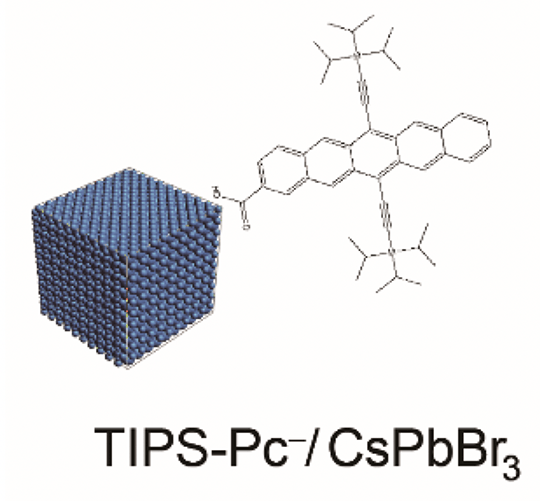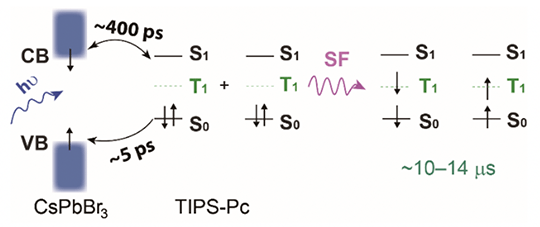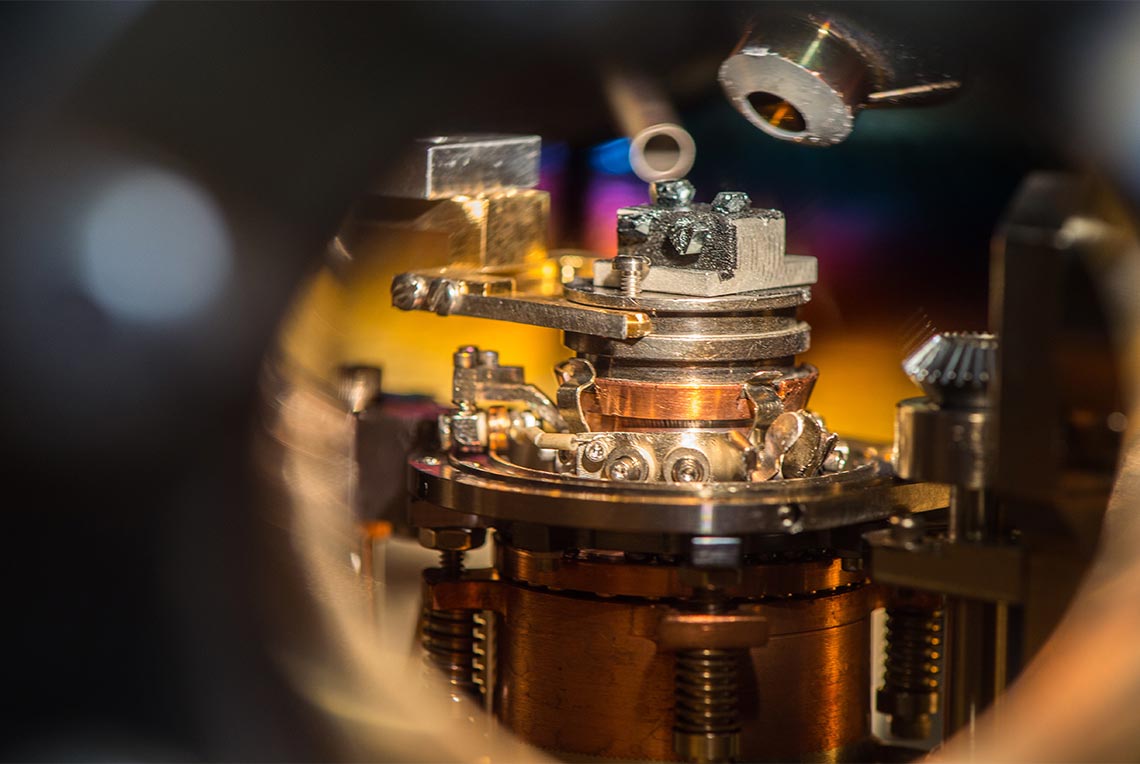Sensitizing Singlet Fission with Perovskite Nanocrystals
March 1, 2019
Singlet fission (SF) is a process that occurs in organic molecules and can enhance solar energy conversion. Tethering SF molecules to nanocrystals (NCs) allows for the SF process to be extended to a broader range of wavelengths.
Scientific Achievement
We coupled pentacene molecules to the surface of perovskite NCs and demonstrated that molecular triplets can be effectively generated by singlet energy transfer and subsequent singlet-fission. The singlet energy transfer is mediated through a Dexter-like electron exchange mechanism at the CsPbBr3/pentacene interface, with an initial ultrafast hole transfer process followed by electron transfer from NC to TIPS-Pc. The singlet energy transfer is ~80% efficient and the subsequent SF is ~145% efficient.
Significance and Impact
SF, where two low-energy triplets can be produced from one high-energy singlet state, has gained significant interest as a way to bypass the Shockley-Queisser limit. Molecules, such as pentacene, that undergo SF also suffer from a lack of wide spectral absorption that is necessary for solar energy conversion. Here we sensitive the pentacene absorption with CsPbBr3 nanocrystals and show that efficient SF can still occur for the pentacene molecules packed on the NC surface. We elucidate the mechanism whereby the NCs absorb a photon and two-triplets are produced in the pentacene molecules.
Research Details
- Excited TIPS-Pc singlets can then undergo efficient SF on the NC surface due to the sufficient intermolecular coupling provided by dense surface binding.
- Transient absorption measurements track the photoexcited carriers and can elucidate the mechanistic details at the semiconductor/organic interface.
DOI: 10.1021/jacs.8b13562
Related People
Matthew Beard
National Renewable Energy Laboratory

Ligand exchange chemistry was developed to prepared CsPbBr3 nanocrystals with varying amount of TIPS pentacene on the NC surface.

Broadband transient absorption spectroscopy can elucidate the mechanism. The singlet energy transfer is initiated by a hole transfer. Once the electron transfers SF occurs when the TIPS-PC packing density is high enough.









